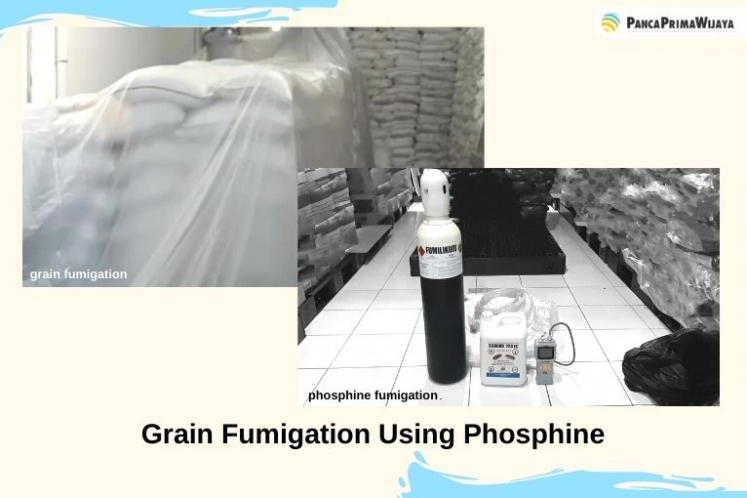 Fumigation is a fundamental process that needs to be done in every commodities storage to keep its loading safe from pests attack. In order to execute a safe grain fumigation, it is mandatory to get to know phosphine fumigation better.
Fumigation is a fundamental process that needs to be done in every commodities storage to keep its loading safe from pests attack. In order to execute a safe grain fumigation, it is mandatory to get to know phosphine fumigation better.
Commodities such as grain and seed are fresh food materials that can be damaged by environmental conditions and also living organisms such as pests due to their nutritional contents.
Fumigation is there to help the storage owner to maintain and protect their commodities from such damages that would lead into some serious losses.
Executing grain fumigation needs a better knowledge about the type of fumigants that are applied in, so that it wouldn’t threaten the environment and humans around there.
Phosphine fumigation has been the most recommended fumigant to use for grain fumigation due to the government regulations.
The characteristic of phosphine is basically a gas that is released from the chemical reaction of hydrogen phosphide or PH3. It is usually sold as a solid form such as tablet, pellet, or a powder with additional materials such as paraffin and carbamate.
Those additional materials are added as a regulator of fumigant release and flammability of the phosphine itself.
Phosphine as a gas, has an ability to diffuse and penetrate into the materials that are being fumigated deeply that becomes a special advantage.
When the phosphine gas is released from the hydrogen phosphide during the grain fumigation, it leaves a small amount of grey-white dust as the residue of tablets, pellets, or powder.
Using phosphine fumigation as a pest controller in grain fumigation gives several advantages along with the disadvantages.
The advantages of using phosphine fumigation as the solution for the grain fumigation can be divided into some points.
First, phosphine fumigation has toxic properties for living organisms that attack grain storage like insects, rodents, birds, and mammals.
Second, phosphine fumigation also has a specific toxicity for the weed seeds, nematodes, and fungi.
Third, phosphine fumigation has a good penetration ability that can enter small gaps like cracks, crevices, burrows, and commodities like grain.
Fourth, phosphine fumigation is affordable and easy to find in the market.
The disadvantages of using phosphine fumigation as the solution for the grain fumigation can be broken down into some points.
First, phosphine fumigation has a high toxicity for humans and will endanger the applicators if they don’t wear self-protection equipment.
Second, to execute phosphine fumigation safely, it is better to use a professional party with a good skill and knowledge as well in treating grain fumigation using phosphine.
Third, while phosphine fumigation is under construction, every room that is being fumigated has to be closed well to avoid gas leakage.
Fourth, phosphine fumigation has the potential of seed germination injuries, so it is better to prepare the grain fumigation thoroughly.
Fifth, phosphine fumigation tends to leave more residues than other fumigation types. So, it is important to look after the residue.
Sixth, phosphine fumigation can affect the product taste and odor as well after the exposure. You better consult with a third party or the professional to avoid such a thing.
Don't hesitate to contact us if you want to know more about our products.